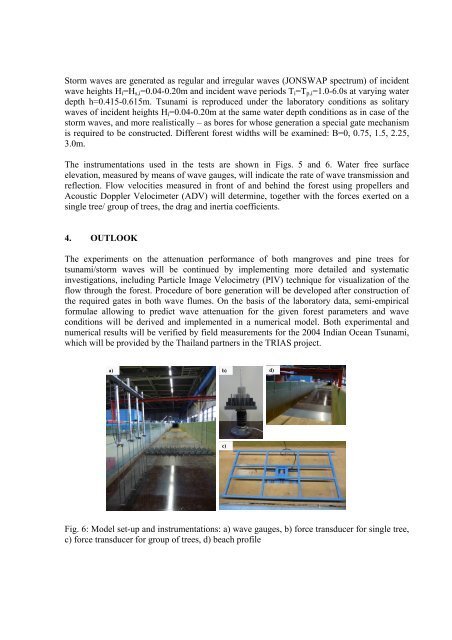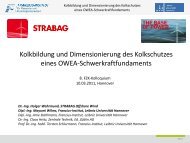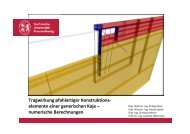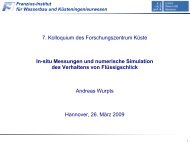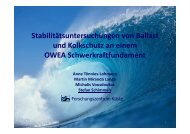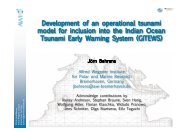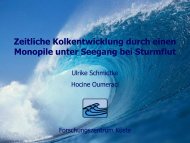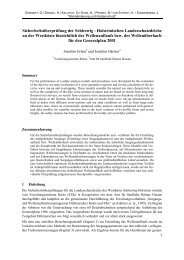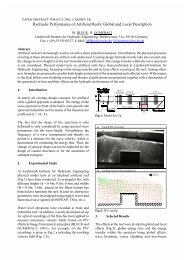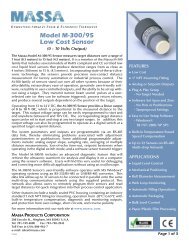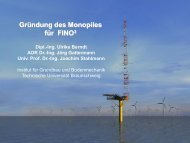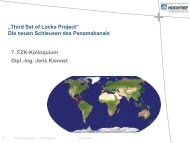DAMPING TSUNAMI AND STORM WAVES BY COASTAL ... - FZK
DAMPING TSUNAMI AND STORM WAVES BY COASTAL ... - FZK
DAMPING TSUNAMI AND STORM WAVES BY COASTAL ... - FZK
Create successful ePaper yourself
Turn your PDF publications into a flip-book with our unique Google optimized e-Paper software.
Storm waves are generated as regular and irregular waves (JONSWAP spectrum) of incident<br />
wave heights Hi=Hs,i=0.04-0.20m and incident wave periods Ti=Tp,i=1.0-6.0s at varying water<br />
depth h=0.415-0.615m. Tsunami is reproduced under the laboratory conditions as solitary<br />
waves of incident heights Hi=0.04-0.20m at the same water depth conditions as in case of the<br />
storm waves, and more realistically – as bores for whose generation a special gate mechanism<br />
is required to be constructed. Different forest widths will be examined: B=0, 0.75, 1.5, 2.25,<br />
3.0m.<br />
The instrumentations used in the tests are shown in Figs. 5 and 6. Water free surface<br />
elevation, measured by means of wave gauges, will indicate the rate of wave transmission and<br />
reflection. Flow velocities measured in front of and behind the forest using propellers and<br />
Acoustic Doppler Velocimeter (ADV) will determine, together with the forces exerted on a<br />
single tree/ group of trees, the drag and inertia coefficients.<br />
4. OUTLOOK<br />
The experiments on the attenuation performance of both mangroves and pine trees for<br />
tsunami/storm waves will be continued by implementing more detailed and systematic<br />
investigations, including Particle Image Velocimetry (PIV) technique for visualization of the<br />
flow through the forest. Procedure of bore generation will be developed after construction of<br />
the required gates in both wave flumes. On the basis of the laboratory data, semi-empirical<br />
formulae allowing to predict wave attenuation for the given forest parameters and wave<br />
conditions will be derived and implemented in a numerical model. Both experimental and<br />
numerical results will be verified by field measurements for the 2004 Indian Ocean Tsunami,<br />
which will be provided by the Thailand partners in the TRIAS project.<br />
a)<br />
b)<br />
c)<br />
Fig. 6: Model set-up and instrumentations: a) wave gauges, b) force transducer for single tree,<br />
c) force transducer for group of trees, d) beach profile<br />
d)


